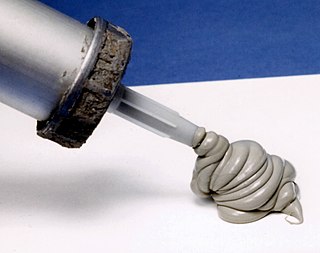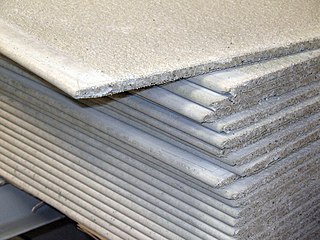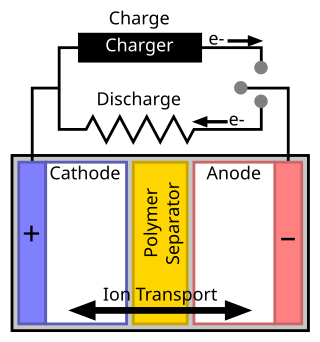This article has multiple issues. Please help improve it or discuss these issues on the talk page . (Learn how and when to remove these template messages)
|
Organosilicon water repellent:
This article has multiple issues. Please help improve it or discuss these issues on the talk page . (Learn how and when to remove these template messages)
|
Organosilicon water repellent:
The water-repelling liquid is applied:
In addition, the treated surface does not change its appearance, maintains air permeability - material is not sweated and retains the ability to output pairs. The water-repelling liquid is applied:
In addition, the treated surface does not change its appearance, maintains air permeability - material is not sweated and retains the ability to output pairs.
The positive effects of the application of methyl hydride siloxane:
Water emulsion of organo silicon the methyl hydride siloxane with additives of emulsifier, biocides and stabilizers Solids content in the emulsion SE 50-94M is 50%. The color is from white to light gray.
Application:
The emulsion oligo methyl hydride siloxane has properties and characteristics similar with the methyl hydride siloxane. The emulsion is also used to provide various materials with water repellency properties.
However, as oligo methyl hydride siloxane is the water emulsion, it can be applied as an additive in the production of solutions and mixtures that is by the volumetric method.
Liquid is a mixture of tetra ethoxy silane and polyethoxy siloxanes.
Application
Commercially available siliconates include potassium methyl siliconate (CAS 31795-24-1, CH5KO3Si) and sodium methyl siliconate (CAS 16589-43-8, CH5NaO3Si). These are supplied as a concentrate in water with an active content of between 30 and 40% by weight. This solution is further diluted in water prior to their application by spraying, dipping or rolling to a mineral building material, such as brickwork, to make the surface water repellent. [1] The dilution is clear, stable with a high pH of 13 to 14. When applied to a surface the siliconate reacts with carbon dioxide in the air to form an insoluble water resistant treatment within 24 hours.
The methyl group has now attached itself to the substrata.
The salts formed by this reaction are often the cause of white efflorescence when too much of the solution is applied to the surface.

A silicone or polysiloxane is a polymer made up of siloxane (−R2Si−O−SiR2−, where R = organic group). They are typically colorless oils or rubber-like substances. Silicones are used in sealants, adhesives, lubricants, medicine, cooking utensils, thermal insulation, and electrical insulation. Some common forms include silicone oil, silicone grease, silicone rubber, silicone resin, and silicone caulk.

Polypropylene (PP), also known as polypropene, is a thermoplastic polymer used in a wide variety of applications. It is produced via chain-growth polymerization from the monomer propylene.

Styrene-butadiene or styrene-butadiene rubber (SBR) describe families of synthetic rubbers derived from styrene and butadiene. These materials have good abrasion resistance and good aging stability when protected by additives. In 2012, more than 5.4 million tonnes of SBR were processed worldwide. About 50% of car tires are made from various types of SBR. The styrene/butadiene ratio influences the properties of the polymer: with high styrene content, the rubbers are harder and less rubbery. SBR is not to be confused with the thermoplastic elastomer, styrene-butadiene block copolymer, although being derived from the same monomers.
Polydimethylsiloxane (PDMS), also known as dimethylpolysiloxane or dimethicone, is a silicone polymer with a wide variety of uses, from cosmetics to industrial lubrication.

A siloxane is a functional group in organosilicon chemistry with the Si−O−Si linkage. The parent siloxanes include the oligomeric and polymeric hydrides with the formulae H(OSiH2)nOH and (OSiH2)n. Siloxanes also include branched compounds, the defining feature of which is that each pair of silicon centres is separated by one oxygen (O) atom. The siloxane functional group forms the backbone of silicones, the premier example of which is polydimethylsiloxane (PDMS). The functional group R3SiO− (where the three Rs may be different) is called siloxy. Siloxanes are manmade and have many commercial and industrial applications because of the compounds’ hydrophobicity, low thermal conductivity, and high flexibility.

Waterproofing is the process of making an object or structure waterproof or water-resistant so that it remains relatively unaffected by water or resisting the ingress of water under specified conditions. Such items may be used in wet environments or underwater to specified depths.
Silicone rubber is an elastomer composed of silicone—itself a polymer—containing silicon together with carbon, hydrogen, and oxygen. Silicone rubbers are widely used in industry, and there are multiple formulations. Silicone rubbers are often one- or two-part polymers, and may contain fillers to improve properties or reduce cost.

Methyl cellulose is a compound derived from cellulose. It is sold under a variety of trade names and is used as a thickener and emulsifier in various food and cosmetic products, and also as a bulk-forming laxative. Like cellulose, it is not digestible, not toxic, and not an allergen.

A cement board is a combination of cement and reinforcing fibers formed into sheets, of varying thickness that are typically used as a tile backing board. Cement board can be nailed or screwed to wood or steel studs to create a substrate for vertical tile and attached horizontally to plywood for tile floors, kitchen counters and backsplashes. It can be used on the exterior of buildings as a base for exterior plaster (stucco) systems and sometimes as the finish system itself.
A silicone oil is any liquid polymerized siloxane with organic side chains. The most important member is polydimethylsiloxane. These polymers are of commercial interest because of their relatively high thermal stability, lubricating, and dielectric properties.
Stone sealing is the application of a surface treatment to products constructed of natural stone to retard staining and corrosion. All bulk natural stone is riddled with interconnected capillary channels that permit penetration by liquids and gases. This is true for igneous rock types such as granite and basalt, metamorphic rocks such as marble and slate, and sedimentary rocks such as limestone, travertine, and sandstone. These porous channels act like a sponge, and capillary action draws in liquids over time, along with any dissolved salts and other solutes. Very porous stone, such as sandstone absorb liquids relatively quickly, while denser igneous stones such as granite are significantly less porous; they absorb smaller volumes, and more slowly, especially when absorbing viscous liquids.

Water-repellent glass (WRG) is a transparent coating film fabricated onto glass, enabling the glass to exhibit hydrophobicity and durability. WRGs are often manufactured out of materials including derivatives from per- and polyfluoroalkyl substances (PFAS), tetraethylorthosilicate (TEOS), polydimethylsilicone (PDMS), and fluorocarbons. In order to prepare WRGs, sol-gel processes involving dual-layer enrichments of large size glasses are commonly implemented.

Methyltrichlorosilane, also known as trichloromethylsilane, is a monomer and organosilicon compound with the formula CH3SiCl3. It is a colorless liquid with a sharp odor similar to that of hydrochloric acid. As methyltrichlorosilane is a reactive compound, it is mainly used a precursor for forming various cross-linked siloxane polymers.
Anti-scratch coating is a type of protective coating or film applied to an object's surface for mitigation against scratches. Scratches are small surface-level cuts left on a surface following interaction with a sharper object. Anti-scratch coatings provide scratch resistances by containing tiny microscopic materials with scratch-resistant properties. Scratch resistance materials come in the form of additives, filters, and binders. Besides materials, scratch resistances is impacted by coating formation techniques. Scratch resistance is measured using the Scratch-hardness test. Commercially, anti-scratch coatings are used in the automotive, optical, photographic, and electronics industries, where resale and/or functionality is impaired by scratches. Anti-scratch coatings are of growing importance as traditional scratch resistance materials like metals and glass are replaced with low-scratch resistant plastics.

In materials science, ceramic matrix composites (CMCs) are a subgroup of composite materials and a subgroup of ceramics. They consist of ceramic fibers embedded in a ceramic matrix. The fibers and the matrix both can consist of any ceramic material, whereby carbon and carbon fibers can also be regarded as a ceramic material.
Concrete sealers are applied to concrete to protect it from surface damage, corrosion, and staining. They either block the pores in the concrete to reduce absorption of water and salts or form an impermeable layer which prevents such materials from passing.

A separator is a permeable membrane placed between a battery's anode and cathode. The main function of a separator is to keep the two electrodes apart to prevent electrical short circuits while also allowing the transport of ionic charge carriers that are needed to close the circuit during the passage of current in an electrochemical cell.
Polysilazanes are polymers in which silicon and nitrogen atoms alternate to form the basic backbone. Since each silicon atom is bound to two separate nitrogen atoms and each nitrogen atom to two silicon atoms, both chains and rings of the formula occur. can be hydrogen atoms or organic substituents. If all substituents R are H atoms, the polymer is designated as Perhydropolysilazane, Polyperhydridosilazane, or Inorganic Polysilazane ([H2Si–NH]n). If hydrocarbon substituents are bound to the silicon atoms, the polymers are designated as Organopolysilazanes. Molecularly, polysilazanes are isoelectronic with and close relatives to Polysiloxanes (silicones).
Paint has four major components: pigments, binders, solvents, and additives. Pigments serve to give paint its color, texture, toughness, as well as determining if a paint is opaque or not. Common white pigments include titanium dioxide and zinc oxide. Binders are the film forming component of a paint as it dries and affects the durability, gloss, and flexibility of the coating. Polyurethanes, polyesters, and acrylics are all examples of common binders. The solvent is the medium in which all other components of the paint are dissolved and evaporates away as the paint dries and cures. The solvent also modifies the curing rate and viscosity of the paint in its liquid state. There are two types of paint: solvent-borne and water-borne paints. Solvent-borne paints use organic solvents as the primary vehicle carrying the solid components in a paint formulation, whereas water-borne paints use water as the continuous medium. The additives that are incorporated into paints are a wide range of things which impart important effects on the properties of the paint and the final coating. Common paint additives are catalysts, thickeners, stabilizers, emulsifiers, texturizers, biocides to fight bacterial growth, etc.

Alkenyl succinic anhydrides (ASA) are derivatives of succinic anhydrides. One H of the succinic anhydride ring is replaced with an iso-alkenyl chain (C14 to C22). ASA's are colorless and usually viscous liquids. They are widely used, especially in surface sizing of paper, paperboard, and cardboard, as well as in the hydrophobicization of cellulose fibers. Products treated with it show reduced penetration of aqueous media, such as inks or drinks (like milk or fruit juices).